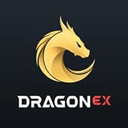1 Level
5 Review
3 Karma
Review on ICON by Emiko Nasser

How Does ICON Work? Loopchain & LFT As previously mentioned, ICON is heavily…
How Does ICON Work?
Loopchain & LFT
As previously mentioned, ICON is heavily based on theloop’s Loopchain technology.
This is a blockchain utilising a unique consensus mechanism called Loop Fault Tolerance (as opposed to more traditional Proof of Work or Proof of Stake consensus mechanisms used in most other currencies), and it should allow for very rapid block times. As a result, ICON shouldn’t see the kinds of delays that can affect Bitcoin, Ethereum, and other currencies.
I won’t go into full detail here on how LFT works, but I recommend checking out the white paper for more information on that, and much more.
As well as this, ICON has some interesting method for running and executing Smart Contracts, among other things. Again, this is all in the white paper if you’re interested.
Nexus & Communities
It is a Loopchian-based blockchain called Nexus that ICON uses to connect individual blockchains (which they call Communities) together.
Any blockchain that want to connect to ICON is linked by Community Representatives, or C-Reps.
C-Reps are nodes elected within their own Community, and they get to vote on governance decisions within ICON. For example, they get a vote in transaction verification, or on ICX distribution. And, as a reward for doing these jobs, they will receive ICX.
Additionally, there are Citizen Nodes. These don’t have any of the voting rights that C-Reps get, but they can make transactions, build or run DAPPs, and do other tasks like this.
Contributions to ICON’s network is rewarded with ICX tokens.
The exact level of reward given out is determined using AI (hence the involvement of DAVinCI), which monitors different contributions to ICON and determines payouts based on ICON’s Incentive Scoring System (IISS).
Various factors, such as the amount of frozen ICX tied to a node, its C-Rep status, or the ICX exchange volume of its Community will be taken into account in IISS.
Pros
- What Is ICON? Many people have compared ICON to projects like Ethereum and EOS, but despite how great both of those currencies are, it’s kind of underselling ICON to compare them. This is because, whilst ICON does act as a platform that Decentralised Apps (DAPPs) and Smart Contracts can be built on, it does so much more than just that. ICON is a blockchain deigned to interlink many others, something ICON refers to as ‘hyperconnecting’. At the moment, we’re seeing the emergence of many blockchains, both public and private, aiming to disrupt various industries and serve numerous purposes, and this will only increase in the future as more people realise the benefits of blockchain technology. But, most of these are very singular, isolated things, making it difficult for one business to interact with another - something that could be beneficial for them. ICON want to allow for these different blockchains to communicate and transact information. It essentially wants to unify all of the existing and future blockchains used by various industries into one interconnected network.
Cons
- Background Whilst ICON only recently ICO’d, it has actually been in development for about 2 years. Icon is based on something called loopchain, a blockchain technology developed by a South Korean company called theloop. theloop build private blockchains for various institutions, tailoring them to meet the exact needs of their clients. And now, with the development of ICON, they can connect all these private chains together. This gives ICON a brilliant foundation on which to build, because it begins with a number of pre-exisitng clients and connections established by theloop. Additionally, it means ICON can grow quickly, as theloop goes around to potential clients, discusses why they could benefit from using blockchain technology and being connected into ICON’s network, and then implement those solutions. The entire project is backed by a multi-billion dollar South Korean FinTech company called Dayli Finance Group, who are working together with 3 Korean Universities to make ICON a reality. DAYLI own theloop, as well as an Artificial Intelligence company called DAVinCI who will be working to integrate AI and Big Data technology into ICON (I’ll get on to why in a bit), and they set a non-profit arm called the ICON Foundation to assist in some areas of ICON’s development.












